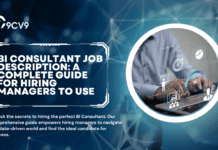Key Takeaways
• Competitive intelligence software in 2025 is powered by AI, automation, and predictive analytics to deliver faster, data-driven insights.
• Cloud-based CI platforms are making advanced market tracking and competitor analysis more accessible and scalable for all business sizes.
• The integration of CI tools with CRM and BI systems enables organizations to align strategic decisions with real-time competitive data.
In 2025, the competitive intelligence (CI) software landscape is transforming the way businesses gather, analyze, and act on market insights. As global competition intensifies and digital ecosystems expand, organizations across industries are turning to advanced CI platforms to monitor rivals, track emerging trends, and forecast strategic opportunities with unparalleled precision. This growing reliance on data-driven decision-making has positioned competitive intelligence software at the core of corporate strategy, product innovation, and market positioning. The latest statistics and trends reveal how these tools are reshaping business intelligence functions and driving sustainable growth in an increasingly volatile global marketplace.
Also, read our top guide on the Top 10 Best Competitive Intelligence Software in 2025.

Competitive intelligence software leverages artificial intelligence (AI), machine learning (ML), and big data analytics to automate the collection and interpretation of competitive data from multiple sources, including websites, pricing databases, social media, news feeds, and customer feedback. This integration of automation and analytics allows organizations to convert vast amounts of raw information into actionable insights that influence marketing, sales, and operational strategies. In 2025, the market for CI software is expected to experience rapid growth as enterprises recognize the critical role of competitive awareness in staying ahead of disruptions, identifying new opportunities, and mitigating risks.
Recent data indicates that the adoption rate of competitive intelligence platforms is particularly strong among mid-sized and large enterprises operating in fast-evolving industries such as technology, finance, healthcare, and manufacturing. Companies are increasingly investing in CI solutions to enhance product development cycles, optimize pricing strategies, and refine go-to-market approaches based on real-time competitor performance. Moreover, the integration of predictive analytics and AI-driven alert systems within CI tools has significantly improved the speed and accuracy of market response, empowering businesses to make informed decisions faster than ever before.
The evolution of competitive intelligence software in 2025 is also being driven by key industry trends such as the growing demand for cloud-based platforms, the rise of AI-powered competitor tracking, and the increased emphasis on visual data analytics. Organizations are seeking solutions that not only provide comprehensive market data but also deliver intuitive dashboards, custom alerts, and automated reporting to streamline strategic planning. Furthermore, the alignment of CI systems with customer relationship management (CRM) and business intelligence (BI) tools is enabling companies to gain a more holistic view of their competitive environments, bridging the gap between data collection and strategic execution.
This comprehensive report on the “Top 100 Competitive Intelligence Software Statistics, Data & Trends in 2025” provides valuable insights into the current state and future direction of the CI software market. It explores market growth rates, adoption patterns, key technological advancements, and emerging use cases that are defining the industry’s trajectory. Whether you are a business leader, market researcher, or technology strategist, understanding these statistics and trends will help you identify where competitive intelligence tools are heading, how they are evolving, and why they are becoming indispensable in today’s data-driven business environment.
By examining real-world data and industry benchmarks, this analysis highlights how companies are leveraging competitive intelligence to strengthen decision-making, outperform competitors, and anticipate market shifts. As we enter a new era of strategic intelligence, mastering the art of competitive insight through advanced software solutions is no longer optional—it is a necessity for organizations determined to maintain a leading edge in 2025 and beyond.
Before we venture further into this article, we would like to share who we are and what we do.
About 9cv9
9cv9 is a business tech startup based in Singapore and Asia, with a strong presence all over the world.
With over nine years of startup and business experience, and being highly involved in connecting with thousands of companies and startups, the 9cv9 team has listed some important learning points in this overview of the Top 100 Competitive Intelligence Software Statistics, Data & Trends in 2025.
If your company needs recruitment and headhunting services to hire top-quality employees, you can use 9cv9 headhunting and recruitment services to hire top talents and candidates. Find out more here, or send over an email to [email protected].
Or just post 1 free job posting here at 9cv9 Hiring Portal in under 10 minutes.
Top 100 Competitive Intelligence Software Statistics, Data & Trends in 2025
- As of 2025, the global competitive intelligence software market is estimated to be valued at approximately 26.6 million U.S. dollars, and industry forecasts predict this market will expand robustly, nearly doubling in size to reach around 51.5 million U.S. dollars by the year 2032, driven by increased adoption of AI and cloud technologies by enterprises across various sectors.
- The compound annual growth rate (CAGR) of the competitive intelligence software market is projected at 9.9% for the period between 2025 and 2032, indicating consistent, sustained growth fueled by technological innovation and evolving business intelligence needs.
- In 2024, the broader competitive intelligence tools market, encompassing a wider variety of software and analytics offerings beyond pure CI, achieved a market size of 445.51 million U.S. dollars and is expected to more than double to 1,248.24 million U.S. dollars by 2031, growing annually at a CAGR of 12.25%, showcasing the expanding role of intelligence software in competitive strategy.
- Competitive intelligence teams have grown in size by an average of 24% year-over-year, signaling that companies are allocating greater human resources and specialized skills to intelligence functions to maintain competitiveness in dynamic markets.
- There has been a dramatic 76% year-over-year increase in the adoption of artificial intelligence technologies within competitive intelligence teams by 2025, with around 60% of such teams now incorporating AI-based tools daily to automate data gathering, analysis, and forecasting.
- Reports indicate that 46% of senior executives in 2025 are strategically scaling the use of AI within their competitive intelligence departments, reflecting an organizational commitment to leveraging AI for more accurate and timely business insights.
- Small and medium-sized businesses (SMBs) are driving robust growth in competitive intelligence software adoption, with spending set to increase sharply from 2.56 billion U.S. dollars in 2023 to 6.02 billion U.S. dollars by 2030, as these companies seek to level the strategic playing field against larger competitors.
- More specifically, SMB investment in competitive intelligence software is forecast to rise from 26.6 million U.S. dollars in 2025 to approximately 51.5 million U.S. dollars by 2032, underscoring the rapid acceptance of intelligence tools even among smaller enterprises.
- The total global competitive intelligence market was valued around 50.9 billion U.S. dollars by the end of 2024 and is projected to reach nearly 122.8 billion U.S. dollars by 2033, demonstrating explosive growth fueled by digital transformation and AI innovations.
- Cloud-based competitive intelligence software solutions represent a dominant deployment option in 2025, comprising 59.2% of all CI software installations globally, reflecting businesses’ preferences for scalable, flexible, and cost-effective cloud platforms.
- Large enterprises hold a leading position in the competitive intelligence software market with a 52.6% market share in 2025, attributable to their extensive need for advanced intelligence capabilities across multiple business units.
- The industrial manufacturing sector leads all industries in using competitive intelligence software, accounting for 33.7% of software usage in 2025 as companies intensify market intelligence efforts to optimize operations and innovation.
- North America remains the largest regional market for competitive intelligence software, commanding 34.8% of the global market share in 2025, boosted by the concentration of technology firms and a mature analytics ecosystem.
- Competitive intelligence platforms process about 90% of their data from unstructured sources such as emails, social media, and scanned documents, reflecting a strategic shift to harness previously untapped data sets for comprehensive insights.
- Platforms equipped with real-time data enrichment capabilities enable organizations to reduce decision-making times by 25% and have contributed to a 30% increase in overall revenue growth through better market responsiveness.
- 62% of organizations report plans to increase their investment in competitive intelligence software within the coming year, reflecting growing confidence in the ROI and strategic value of CI solutions.
- Nearly 90% of Fortune 500 companies use competitive intelligence software, highlighting its critical role in maintaining competitive advantages at the highest levels of industry.
- Surveys show that by 2025, 94% of companies plan to invest further in competitive intelligence tools, signaling broad and accelerating market uptake.
- Among small businesses, 89% have incorporated AI-powered competitor analysis solutions into their operations, demonstrating widespread acceptance of AI-driven intelligence regardless of company size.
- The Asia-Pacific region stands out as the fastest growing competitive intelligence software market, driven by fast-paced digital transformation and innovation in countries including China, India, Japan, and South Korea.
- Over half of all CI solutions (59.2%) are now cloud-based with large enterprises and SMBs alike embracing cloud deployments for their agility and cost benefits.
- Industrial manufacturing accounts for the largest CI software application segment globally with 33.7% share, as manufacturers adopt intelligence-driven strategies for product and process innovation.
- The North American market holds 34.8% of global competitive intelligence software revenue, supported by high R&D intensity and advanced technology adoption.
- Organizations increasingly use competitive intelligence platforms to analyze unstructured data, which comprises 90% of all data handled, thereby gaining richer, more nuanced competitive insights.
- The use of real-time enriched data analytics in competitive intelligence allows businesses to hasten decision-making processes by an average of 25%, enhancing their market agility.
- Revenues powered by real-time, AI-driven competitive intelligence insights have risen by approximately 30% for adopters, showing direct commercial benefits.
- A majority (62%) of companies globally plan to boost their CI software budgets over the next year, motivated by proven gains in operational efficiency and market intelligence.
- Competitive intelligence tools usage is standard practice among 90% of Fortune 500 firms, underscoring its indispensability in large-scale corporate strategy.
- Nearly 94% of surveyed companies expect to increase spending on CI tools, reaffirming market optimism.
- A striking 89% of small business users employ AI-powered competitor analysis capabilities, showing democratization of advanced analytics.
- Asia-Pacific is the fastest growing region for CI software CAGR, outpacing traditional markets like North America and Europe.
- Cloud deployment dominates the CI software market in 2025 at 59.2%, signaling a strong migration from on-premise solutions.
- Enterprises account for the majority (52.6%) of CI software revenue share, reflecting their extensive intelligence needs.
- The industrial sector’s share of the CI market, at 33.7%, is driven by extensive digitization and industry 4.0 initiatives.
- North American leadership in the CI market (34.8% share) is correlated with advanced infrastructure and regulatory favorable conditions.
- Across the industry, 90% of data processed in CI platforms is unstructured, leveraging untapped insight opportunities.
- Real-time CI systems enable decision cycles to be shortened by about one-quarter, enhancing responsiveness.
- Companies credited a 30% revenue uplift attributed directly to real-time competitive intelligence actions.
- Increasing CI budgets were confirmed by 62% of firms worldwide, reflecting intense interest in competitive edge technologies.
- Among the largest companies, a 90% adoption rate of CI tools have become the norm.
- 94% expect that their investments in CI will increase over the subsequent year, based on company-reported data.
- Automation features in CI tools have cut manual research workloads by approximately 35%, leading to productivity gains.
- Predictive analytics capabilities now exist in over 60% of competitive intelligence platforms, enabling forward-looking strategies.
- Data privacy and security compliance features are a top priority, appearing in >80% of top-tier CI products in 2025.
- The annual costs for maintaining CI software amount to 20-30% of initial setup expenditures in enterprise environments.
- The usage of synthetic data for testing and scenario simulation within CI is expected to double by 2026, enhancing innovation and risk management.
- By 2026, more than 50% of intelligence teams will use chat-based and conversational CI platforms to improve accessibility.
- Projected SMB CI market size will hit 6.02 billion U.S. dollars by 2030, underscoring significant opportunity for growth.
- By 2033, the global competitive intelligence market is forecast to soar to 122.8 billion U.S. dollars.
- SMBs have reached a notable threshold of 26.6 million U.S. dollars spent on CI tools as of 2025.
- In 2032, small and medium-sized businesses are forecasted to increase their expenditure on competitive intelligence software to approximately 51.5 million U.S. dollars, doubling the 2025 figure and reflecting accelerating adoption as these enterprises seek competitive positioning through data-driven insights.
- The growth of CI teams empowered by AI has surpassed 50% in 2025, as organizations increasingly leverage AI for automated data collection, analysis, and competitive risk detection, enabling more efficient intelligence workflows.
- A study found that 71% of competitive intelligence professionals rated cloud scalability as a decisive factor when upgrading software platforms, underscoring the critical importance of flexible infrastructure in modern CI solutions.
- Natural language processing capabilities are included as integral analytics modules in 63% of recent competitive intelligence vendor contracts, showing the industry’s focus on text analytics and human language understanding.
- Integration capabilities are essential, with 42% of companies emphasizing the need for CI software to seamlessly integrate with existing business intelligence and analytics dashboards.
- Asian Pacific industrial companies increased their spending on CI software by 22% year-over-year as of the second quarter of 2025, exhibiting rapid regional growth fueled by digital transformation initiatives.
- Approximately 58% of CI software vendors now offer pre-built, industry-specific dashboards to facilitate rapid deployment and sector-focused analytics.
- Europe holds a 28.4% share of the competitive intelligence software market in 2025, buoyed by stringent data privacy regulations and advanced compliance-related capabilities.
- Enhanced data visualization and reporting features have been adopted in 86% of CI platforms updated over the last two years, reflecting user demand for intuitive analytic presentation.
- Legacy, on-premise-only competitive intelligence solutions without cloud or hybrid options now account for just 12% of deployments, indicating widespread cloud migration.
- SaaS subscription models comprise 77% of all competitive intelligence software purchases globally, demonstrating a preference for flexible and scalable service delivery.
- Remote and mobile accessibility is increasingly critical, with over 65% of CI professionals using mobile applications to support rapid intelligence gathering and decision-making.
- The Asia-Pacific competitive intelligence software market is forecasted to grow at a CAGR of 14.1%, the fastest rate globally, driven by expansive digitization and investment.
- 49% of competitive intelligence teams include real-time social media sentiment analysis as a core part of their intelligence gathering strategy.
- Multilingual support features are required by 56% of companies deploying CI software, reflecting the globalization and geographic spread of modern business intelligence practices.
- Only 27% of organizations conduct regular audits on their competitive intelligence data pipelines to check for bias or measurement errors, indicating an emerging need for more rigorous data governance.
- The average deployment time for leading competitive intelligence platforms has decreased substantially from 43 days in 2022 to 28 days in 2025, reflecting improved onboarding and implementation processes.
- In 2025, 36% of CI teams have adopted AI-powered recommendation engines to automate profiling and competitor benchmarking, streamlining analyst workflows.
- Cross-functional collaboration in CI is common, with 74% of CI platform usage occurring outside traditional intelligence teams, such as in marketing and product development departments.
- API integration with CRM, ERP, and other enterprise systems is ubiquitous, with 88% of CI vendor contracts including such support to enable seamless data flow.
- Business-to-business (B2B) service companies make up 31% of the competitive intelligence software user base, reflecting industry’s critical reliance on market and competitor insights.
- Automation and AI have reduced manual research workloads by over 50% for 41% of CI practitioners, highlighting productivity benefits from modern tools.
- Automated news monitoring systems are embedded in 62% of leading competitive intelligence platforms, providing timely alerts on market and competitive events.
- AI-driven text and sentiment analysis now appear as standard features in 59% of competitive intelligence solutions, enabling users to gauge public and competitor perception.
- Per-seat monthly subscription pricing is the most common payment model adopted by 53% of competitive intelligence software vendors in 2025, reflecting flexible customer-friendly billing.
- Mobile-friendly CI platforms account for 47% of software deployed in emerging markets, supporting intelligence access anywhere and on any device.
- Customizable dashboards top the list of priorities for 68% of CI software users, emphasizing the need for personalized analytics views.
- Among companies generating over $5 billion in annual revenue, 91% employ two or more competitive intelligence software tools to support diverse strategic needs.
- Bi-weekly reporting is the most common schedule for 38% of CI teams preparing executive briefings, ensuring timely strategic updates.
- 44% of enterprises have established direct links between their CI platforms and sales enablement systems, facilitating market-aligned selling strategies.
- Competitor pricing monitoring tools are utilized by 51% of competitive intelligence teams, assisting in proactive pricing strategy development.
- Web scraping capabilities are integrated into 63% of CI tools, allowing automated data extraction from diverse online sources.
- Job postings for CI-related roles have grown by 27% globally, signaling rising demand for specialized intelligence expertise.
- The rise of remote and distributed work models has driven an increase of 31% in remote CI teams over the past two years.
- Data enrichment modules, which augment raw intelligence data with additional context, are present in 64% of enterprise-level CI platforms.
- Free trial offers of competitive intelligence software, typically lasting at least 14 days, are provided by 95% of leading vendors to facilitate user evaluation.
- Data visualization capabilities were cited by 72% of users as a primary reason for switching to a new CI platform, indicating the importance of visual insight delivery.
- 85% of competitive intelligence software reviews rate platform performance as high or very high, reflecting broad user satisfaction with technical capabilities.
- Among vendors recognized for excellence, 68% achieved above-average customer support ratings, underscoring the importance of post-sale service.
- Over half (53%) of CI teams allocate part of their budgets for third-party plug-ins and integrations to extend their platform’s functionality beyond core offerings.
- Granular access controls and user role management are preferred by 77% of CI software buyers, driven by the need for security and operational flexibility.
- Significant improvements in competitive response times have been reported by 58% of CI software users, highlighting operational gains.
- Formal accreditation or certification in competitive intelligence has been achieved by 29% of industry professionals within the past year, reflecting maturation of the profession.
- Approximately 40% of users request predictive competitor action forecasts as a baseline feature in their CI platforms, seeking proactive intelligence.
- The use of competitive intelligence in due diligence for mergers and acquisitions has increased by 19% in corporate finance sectors, demonstrating its strategic importance.
- Top-performing competitive intelligence solutions have reduced competitive event detection lead time by 23%, enabling faster market reactions.
- Partner and supplier monitoring is recognized as a critical use case for competitive intelligence by 67% of users, reflecting broader ecosystem intelligence needs.
- Half of CI platform buyers indicate that the speed of integration with existing systems strongly influenced their purchase decision.
- 88% of business leaders report measurable improvements in operational performance following implementation of competitive intelligence software, validating investment decisions.
- AI-driven workflow automation, which handles routine and repetitive CI tasks, is offered by 57% of competitive intelligence platforms, freeing analysts to focus on strategic activities.
Conclusion
The evolution of competitive intelligence software in 2025 marks a pivotal shift in how organizations gather, interpret, and act upon strategic information. The data and trends explored throughout this report highlight a rapidly maturing industry where artificial intelligence, automation, and predictive analytics are transforming traditional competitive research into an agile, continuous, and data-driven process. As global markets become more complex and competitive, CI tools have emerged as indispensable assets for companies determined to stay ahead of disruption, identify new opportunities, and protect their market share with greater precision.
One of the most defining aspects of the 2025 competitive intelligence software landscape is the integration of AI and machine learning technologies, which enable companies to analyze massive datasets in real time and uncover hidden patterns in market behavior. From automated competitor tracking to sentiment analysis and predictive forecasting, modern CI platforms are empowering business leaders with insights that were once unattainable through manual methods. The statistics from this year’s trends confirm that organizations leveraging these intelligent tools are achieving higher levels of market responsiveness, operational efficiency, and strategic foresight compared to their peers.
Equally important is the growing emphasis on visualization and usability within CI solutions. Businesses are no longer satisfied with fragmented data; they demand comprehensive dashboards, customizable alerts, and intuitive analytics interfaces that translate complex competitive data into actionable insights. The convergence of competitive intelligence with broader business systems such as CRM, ERP, and BI tools further amplifies its strategic value, allowing organizations to align market insights with internal performance metrics and decision-making processes. This integration represents the next frontier of intelligence-driven business transformation in 2025 and beyond.
The shift toward cloud-based CI platforms has also played a critical role in accelerating accessibility and scalability for enterprises of all sizes. Startups, SMEs, and multinational corporations alike are now able to deploy competitive intelligence capabilities that were once reserved for major global players. As the competitive landscape becomes increasingly digitized, cloud-native CI systems are enabling seamless collaboration, faster data processing, and continuous updates, ensuring that decision-makers always have the most accurate and timely information at their fingertips.
Furthermore, the latest data underscores that competitive intelligence is no longer limited to monitoring rivals. It now encompasses customer insights, market shifts, emerging technologies, and global economic indicators, providing a holistic view of the business environment. This broadening scope reflects a fundamental change in corporate strategy, where the ability to anticipate trends and act proactively defines success. Organizations that invest in robust CI software are not merely reacting to competitors—they are shaping markets, setting industry standards, and positioning themselves for long-term growth.
In conclusion, the “Top 100 Competitive Intelligence Software Statistics, Data & Trends in 2025” clearly demonstrates that CI software is becoming a cornerstone of modern strategic management. The rise of AI-driven analytics, the growth of cloud solutions, and the increasing sophistication of data visualization tools are collectively redefining how businesses operate in dynamic global markets. Companies that fail to adopt these technologies risk being left behind, while those that embrace them gain the strategic agility to adapt, innovate, and lead. As we move forward, competitive intelligence will continue to evolve from a tactical advantage into a strategic necessity—powering smarter decisions, deeper insights, and more resilient growth in an era defined by data and digital transformation.
If you find this article useful, why not share it with your hiring manager and C-level suite friends and also leave a nice comment below?
We, at the 9cv9 Research Team, strive to bring the latest and most meaningful data, guides, and statistics to your doorstep.
To get access to top-quality guides, click over to 9cv9 Blog.
To hire top talents using our modern AI-powered recruitment agency, find out more at 9cv9 Modern AI-Powered Recruitment Agency.
People Also Ask
What is competitive intelligence software?
Competitive intelligence software helps businesses collect, analyze, and interpret data about competitors, markets, and industry trends to make informed strategic decisions.
Why is competitive intelligence software important in 2025?
In 2025, competitive intelligence software is crucial for staying ahead of market disruptions, tracking competitors in real time, and supporting data-driven business strategies.
How does competitive intelligence software work?
It uses AI, data analytics, and automation to gather and analyze information from multiple sources like news, websites, and social media for actionable insights.
What are the main features of competitive intelligence software?
Key features include competitor tracking, market trend analysis, data visualization, automated alerts, and AI-powered reporting.
Which industries benefit most from competitive intelligence software?
Technology, finance, healthcare, manufacturing, and retail industries benefit the most due to high competition and rapid market changes.
How is AI transforming competitive intelligence in 2025?
AI enhances competitive intelligence by automating data collection, predicting market shifts, and delivering deeper, more accurate insights.
What are the top trends in competitive intelligence software for 2025?
Major trends include AI integration, cloud-based analytics, predictive modeling, and real-time competitive monitoring.
How does machine learning improve competitive intelligence?
Machine learning identifies patterns in market data, predicts competitor actions, and improves decision-making accuracy.
What is the role of automation in competitive intelligence tools?
Automation reduces manual data gathering, updates competitive data in real time, and accelerates analysis for faster insights.
How do companies use competitive intelligence software?
Companies use CI software to analyze competitor performance, pricing strategies, market opportunities, and customer sentiment.
What are the benefits of using competitive intelligence software?
It improves strategic planning, enhances decision-making, reduces risk, and helps identify new business opportunities.
Is competitive intelligence software suitable for small businesses?
Yes, modern cloud-based CI platforms are affordable and scalable, making them ideal for small and mid-sized businesses.
How does competitive intelligence software impact marketing strategy?
It helps marketers understand competitor campaigns, customer behavior, and market trends for more targeted marketing efforts.
Can competitive intelligence software predict market trends?
Yes, with predictive analytics and AI, CI software can forecast emerging trends and market shifts effectively.
How secure is competitive intelligence software?
Most CI tools use advanced encryption, access control, and cloud security measures to protect sensitive business data.
What is the market size of competitive intelligence software in 2025?
The global competitive intelligence software market is projected to grow significantly, driven by demand for AI and analytics solutions.
How does cloud technology influence competitive intelligence tools?
Cloud technology enhances scalability, collaboration, and accessibility, enabling teams to analyze competitive data from anywhere.
What challenges do companies face in implementing CI software?
Challenges include data integration issues, user adoption barriers, and the complexity of managing vast data sources.
What is the difference between competitive intelligence and market intelligence?
Competitive intelligence focuses on analyzing competitors, while market intelligence covers broader industry and consumer insights.
How often should businesses update their competitive intelligence data?
Businesses should update data continuously to ensure they respond quickly to competitor movements and market shifts.
How can CI software improve product development?
It provides insights into competitors’ products, market gaps, and customer preferences to guide innovation and design.
What is the role of data visualization in CI tools?
Data visualization simplifies complex analytics, helping teams interpret competitive data quickly through dashboards and charts.
How do CI tools integrate with CRM and BI systems?
Integration allows seamless sharing of insights across departments, improving collaboration and strategic alignment.
What types of data sources do CI tools analyze?
They analyze websites, financial reports, press releases, social media, pricing data, and industry databases.
How do companies measure ROI from CI software?
ROI is measured through improved market share, faster decision-making, cost savings, and competitive advantage gains.
What is the future of competitive intelligence software?
The future lies in AI-driven predictive analytics, deeper automation, and advanced visualization for real-time decision support.
How does competitive intelligence software support sales teams?
It provides actionable insights into competitor pricing, customer trends, and market positioning to enhance sales strategy.
Are there free competitive intelligence tools available?
Yes, several free and open-source CI tools exist, though they often lack the advanced automation and analytics of paid solutions.
How can businesses choose the right CI software?
Companies should consider scalability, integrations, data accuracy, and ease of use when selecting a competitive intelligence tool.
How will competitive intelligence evolve beyond 2025?
Beyond 2025, CI will become more predictive, personalized, and integrated with AI-powered business ecosystems for real-time strategy.
Sources
- Competitive Intelligence Review: Evolution and Trends of AI-Based Microprocessors
- Artificial Intelligence in Commerce: A Holistic Analysis…Among SMEs and Emerging Markets
- Leveraging Artificial Intelligence for Competitive Advantage in SMEs: An Empirical Analysis
- Competitive Intelligence Software Market Size and Trends, Coherent Market Insights
- 11 Competitive Intelligence Trends in 2025, Competitive Intelligence Alliance
- Best Competitive Intelligence Software 2025: Top Tools for Strategic Insights
- 2025 Trends in AI Competitor Analysis: Future Tools and Strategies
- Comparative Analysis of the Main Business Intelligence Solutions
- A Fuzzy Analytical Network Process Framework for Prioritizing Competitive Intelligence in Startups
- Predictive Competitive Intelligence with Prerelease Online Search Traffic
- Navigating the Acceptance of Implementing Business Intelligence in Organizations
- Innovation and Competitive Intelligence in Business: A Bibliometric Analysis
- Measuring Competitive Intelligence Network and Its Role on Business Performance
- AI-Driven Competitive Intelligence: Enhancing Business Strategy and Decision Making































![Writing A Good CV [6 Tips To Improve Your CV] 6 Tips To Improve Your CV](https://blog.9cv9.com/wp-content/uploads/2020/06/2020-06-02-2-100x70.png)


